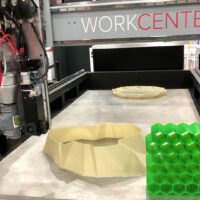Here’s your fun fact for today: unlike data-encoding electronics that utilize an electron’s negative charge to store data, spin electronics (or ‘spintronics”, for short) use the electron’s natural motion and magnetic properties around an atom to encode and store data.
Up until now, physicists have only been able to move electrons around a single atomic layer; drastically limiting their ability to process, encode, and store data. But with the recent discovery by a team of physicists led by colleagues at the University of Glasgow, humans can now transfer information from one electromagnetic layer to another.
This breakthrough in spintronics not only puts it on par with electronics, but gives it the ability to surpass the conventional methods of processing data, storing it, and keeping it operating after long periods of time.

If you aren’t savvy with scientific jargon, the gist of the paper published in Nature suggests a long-range antisymmetric interlayer interaction between numbers of perpendicular magnetic layers. These layers show a one-directional and chiral nature between one another, which prompts the team of physicists to conduct a spin-orbit coupling experiment to test the magnetic interaction between the layers. Using a couple of tiny magnets on a single film, they passed electronic information onto a second film below.
Long story short: the discoveries made by the physicists suggest a whole new dimension for electronic data storage and processing. Whereas past researchers could only work with a single layer, adding the ability to work with several dramatically increases the playing field for the world of spintronics.
It isn’t known just how far researchers are going to take this, but seeing as this is akin to adding a 3D plane to a 2D world, you can bet whatever they develop is going to turn heads.






